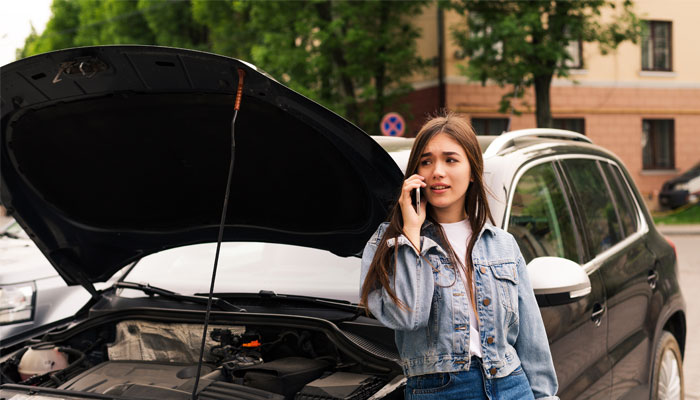When making a major purchase, people typically believe that comprehensive insurance coverage provides complete financial security. Much to their surprise, this may not be the case.
When someone purchases expensive items such as automobiles, fast-declining values and coverage result in a financial gap. If something goes wrong, a borrower could be on the hook in ways they didn’t imagine. That’s why more and more consumers are securing GAP Insurance or Guaranteed Asset Protection Coverage to fill the financial void.
What is GAP Insurance
The concept of GAP Insurance is relatively simple. This type of protection typically pays the difference between the value of an asset and the outstanding loan amount. The term “GAP” highlights precisely what it does for borrowers in the event their vehicle is stolen or totaled in an accident. If the actual cash value of the vehicle is less than the current loan amount, the result could be a financial gap where the borrower must pay the difference between their loan balance and the insurance settlement. This could mean thousands of dollars out of pocket.
What Does GAP Insurance Cover
Imagine someone recently received car loan approval and completed all the paperwork. The car dealership receives the funds, the insurance company provides full coverage, and the new owner drives away with that new car smell. Only miles from the car lot, the driver is involved in a wreck and the vehicle is declared “totaled.” In another scenario, the same new vehicle is stolen within days of the purchase.
It may seem counterintuitive, but the insurance carrier may only approve a claim for the estimated value of the now “used” car. The immediate decline in value results in the owner receiving less money than the sticker price and what they owe on the loan. GAP coverage makes up the difference between what is owed and the amount the insurance carrier is willing to pay on the claim.
Some local lenders may offer plans that will pay a set amount towards your new auto loan in the event of a total loss or unrecovered theft of a vehicle. Looking into these additional perks will be worth your time and can potentially save you more money in the long run.
To take the mystery out of car buying and car loans, download our free eBook:
Car Loans 101: Car Buying Made Easy
Common Reasons You May Need GAP Insurance
This type of financial safeguard has evolved into a broadly-used type of protection beyond automobile purchases. Consumers now routinely secure GAP Insurance when taking out loans for motorcycles and RVs, among many others. Although the previous examples may seem somewhat extreme and statistically unlikely, there are still many reasons to consider securing GAP. Some of the more subtle reasons to obtain Guaranteed Asset Protection include the following.
- 1. You Purchased a Car or Vehicle with Zero-Down: People with good credit scores and histories enjoy increased access to a variety of consumer loans without down payments. If you put zero or little down, the asset is likely to be underwater.
- 2. You Opted for Long Repayment Terms: It’s not uncommon for people to negotiate lengthy car loan terms to make repayment more budget-friendly. When car loans hit the two- or three-year mark, they are often good GAP candidates.
- 3. You Lease a Car or Other Vehicle: Like automobile loans, lease options also place financial responsibility on signatories. Car leaseholders could find themselves paying out of pocket in the event a vehicle is totaled or stolen.
- 4. You Own High-End Assets: Expensive automobiles tend to depreciate quickly. After even minimal use, the gap between what an insurance claim would cover and the loan amount could be significant.
- 5. Your Vehicle is Heavily Used: When borrowers employ a significant down payment, they generally reduce the so-called gap. However, putting excessive mileage on an automobile from above-average use can dramatically reduce values and widen the gap.
An increased number of borrowers procure GAP Insurance in an effort to eliminate unnecessary financial vulnerability. Unfortunately, too many people discover – after the fact – they must spend additional money for something they thought was securely covered.
Is GAP Insurance Right For You?
In a world where retail outlets barrage consumers with product warranties, you may be unsure if buying GAP coverage is worth the money. The relatively low cost of this protection can result in a windfall of savings.
Consider reviewing your current car loan or RV loan repayment amount against baseline estimates from resources such as the Kelley Blue Book, among others. It may be worthwhile to get in touch with your insurance carrier and understand its top-line claim amount should the asset be totaled or stolen. These factors will help you make informed decisions on whether purchasing Guaranteed Asset Protection (GAP) is the right decision.
Where & When Can You Buy GAP Insurance
GAP Insurance is typically available through your local lender. If you’re concerned about a financial gap between the value of your vehicle and the outstanding car loan amount, contact Finex Credit Union today.
For more protection options to consider with your auto loan in addition to Gap Insurance, review our "Car Loans 101: Car Buying Made Easy" guide.
Have Questions about Purchasing Your Next Car? We're Here to Help!
